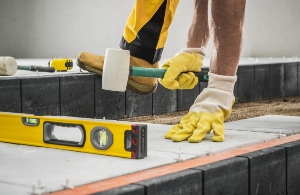A flooded house can feel overwhelming, but taking the right steps immediately makes all the difference. Water damage spreads quickly through walls, floors, and furniture, creating problems that get worse with each passing hour. The key to successful flood recovery is starting the drying process within 24 hours to prevent mold growth and structural damage.
Speed matters when dealing with flood water in a home. The longer water sits, the deeper it soaks into materials and the harder it becomes to remove completely. Homeowners who act fast can often save carpets, furniture, and even walls that might otherwise need replacement.
In this guide, you’ll learn how to dry out a flooded house—from first safety steps to full drying strategies and cost expectations .It covers everything from basic drying techniques to when professional help becomes necessary, especially for Indianapolis residents dealing with flood damage.
In this article, you’ll learn how to dry out a flooded house quickly and safely to prevent long-term damage.
Below, we’ll walk through each important aspect.
- Start here: safety and quick wins in the first 24 hours
- How to dry out a flooded house step by step
- Hidden moisture: where it lingers and how to find it
- From drying to flood water damage restoration
- Choosing help in Indianapolis that keeps stress low
Keep reading! This guide walks through the complete process from immediate safety steps to finding hidden moisture that could cause problems later.
Start here: safety and quick wins in the first 24 hours
The first day after flooding determines how much damage your home will suffer long-term. Taking the right safety steps, stopping ongoing water sources, and documenting everything properly sets up successful restoration.
Power, gas, and structural checks before you step inside
Never enter a flooded home without checking these three critical safety items first.
Turn off electricity at the main breaker before entering any flooded area. Water and electricity create deadly risks. If the electrical panel is in a flooded basement, call an electrician instead.
Check for gas leaks by smelling for unusual odors near gas lines or appliances. Natural gas smells like rotten eggs. If you detect gas, leave immediately and call the gas company from outside.
Look at the building structure from outside first. Check for:
- Sagging ceilings or walls
- Cracks in foundation walls
- Doors or windows that won't close properly
- Tilting or separated sections
If you see structural damage, stay out and call a professional.
Wear protective gear when it's safe to enter. This includes rubber boots, gloves, and masks. Floodwater contains bacteria and chemicals that cause illness.
Stop the source and protect valuables from further damage
Find and stop the water source immediately to prevent more flooding.
Turn off the main water supply if pipes caused the flooding. The shutoff valve is usually near where water enters your home. If you can't find it, call a plumber right away.
Remove standing water using buckets or a wet vacuum designed for water pickup. Start with the deepest areas first. Work quickly because water spreads to dry areas every hour you wait.
Move valuable items to higher ground or dry areas. Focus on these priorities:
- Important documents and photos
- Electronics and computers
- Jewelry and family heirlooms
- Medication and medical equipment
Open windows and doors to start air circulation. This begins the drying process immediately. Set up fans if you have them and electricity is safe to use.
Remove wet carpets and furniture that can't be saved. The faster you remove soaked materials, the less damage spreads to walls and floors.
Photos and notes that make insurance approvals faster
Document everything before you start cleaning to protect your insurance claim.
Take photos of all water damage from multiple angles. Show the water level marks on walls. Photograph damaged furniture, floors, and personal belongings.
Make a detailed list of damaged items including:
- Brand names and model numbers
- Purchase dates and original costs
- Current condition and estimated replacement value
Keep all receipts for emergency repairs and cleanup supplies. Insurance companies often cover these immediate expenses.
Write down the timeline of events. Note when flooding started, when you discovered it, and what actions you took. This information helps insurance adjusters understand the situation.
Contact your insurance company within 24 hours if possible. Many policies require prompt notification of damage. Ask about emergency funds for temporary housing if your home isn't livable.
Save samples of damaged materials like carpet or drywall pieces. Adjusters sometimes need these to determine coverage amounts.
How to dry out a flooded house step by step
The drying process requires specific equipment choices and proper timing to prevent mold growth and structural damage. Professional water extraction services work faster than home equipment for severe flooding, while strategic airflow and dehumidifier placement accelerates the entire process.
Water extraction services vs wet/dry vac: what to use when
Professional water extraction services handle severe flooding with powerful truck-mounted pumps. These systems remove thousands of gallons per hour. They work best when water covers large areas or reaches several inches deep.
Wet/dry vacuums work for minor flooding and cleanup tasks. They remove 5-15 gallons per hour depending on the model. Use them for water under one inch deep or in small rooms.
When to choose professional services:
- Water covers more than 500 square feet
- Water depth exceeds 2 inches
- Sewage or contaminated water present
- Multiple rooms affected
When wet/dry vacs work:
- Single room flooding
- Less than 100 square feet affected
- Clean water only
- Shallow puddles under furniture
Professional services include moisture detection and industrial drying equipment. This prevents hidden water damage inside walls and floors.
Airflow, dehumidifiers, and heat; setups that speed drying
Air circulation moves moisture away from wet surfaces. Place fans every 10-15 feet throughout affected areas. Point them toward wet walls, floors, and furniture.
Dehumidifiers pull moisture from the air. Use one dehumidifier per 500 square feet of flooded space. Empty water tanks every 8-12 hours.
Heat sources speed evaporation but require careful control. Keep temperatures between 70-80°F. Higher temperatures can warp wood and crack drywall.
Optimal setup arrangement:
- Place dehumidifiers in room centers
- Position fans to create cross-ventilation
- Open interior doors between rooms
- Remove wet insulation and padding
Run all equipment continuously for maximum effectiveness. Check humidity levels daily with a moisture meter. Target humidity below 50% to prevent mold growth.
How long does it take for a flooded house to dry up?
Drying time depends on several factors. Water depth, room size, and outdoor humidity affect the process. Most homes take 3-7 days with proper equipment.
Typical drying timeframes:
- Minor flooding: 2-3 days
- Moderate flooding: 4-5 days
- Severe flooding: 1-2 weeks
- Basement flooding: 7-10 days
Materials dry at different rates. Hardwood floors take 3-5 days. Drywall requires 4-7 days. Concrete foundations need 2-3 weeks to fully dry.
Check moisture levels daily using a moisture meter. Wood should read below 15% moisture content. Drywall should measure under 12%.
Signs the house is dry:
- No visible water stains
- Surfaces feel dry to touch
- Humidity stays below 50%
- No musty odors present
Start the drying process within 48 hours to prevent mold growth. Delay increases drying time and damage costs. According to the EPA, mold can begin growing within 24 to 48 hours of water exposure if drying is not completed.
Hidden moisture: where it lingers and how to find it
After surface water disappears, moisture can hide in walls, under floors, and inside insulation for weeks or months. These hidden wet spots cause mold growth, structural damage, and health problems if not found and dried quickly.
Wall cavities, subfloors, and insulation that stay wet
Water gets trapped inside walls through small cracks and gaps during flooding. It soaks into drywall, insulation, and wooden studs. This moisture can't escape easily because walls are sealed spaces.
Common hiding spots include:
- Behind drywall and paneling
- Inside wall cavities between studs
- Wooden framing and baseboards
- Insulation materials
Subfloors under carpets and hardwood hold water for long periods. Plywood and particle board subfloors absorb water like sponges. Water also pools in crawl spaces and basement floor joints.
Signs of hidden moisture:
- Musty smells
- Soft or spongy floors
- Discolored walls or baseboards
- Peeling paint or wallpaper
Professional moisture meters detect wet materials even when surfaces feel dry. These tools measure moisture levels in wood, drywall, and concrete. They help locate problem areas that need immediate attention.
Can water damage just dry out? What happens if you wait
Water damage does not simply dry out on its own without causing problems. Waiting leads to serious issues that cost more money and time to fix later.
Problems that develop within 24-48 hours:
- Mold spores start growing
- Wood begins to warp and swell
- Drywall becomes soft and crumbly
- Metal parts start rusting
The EPA advises that if materials remain wet for more than 48 hours, homeowners should assume mold growth has already started, even if it’s not yet visible.
After one week of moisture:
- Mold spreads rapidly
- Structural wood weakens
- Electrical systems may fail
- Health risks increase
Materials like drywall and insulation often need complete replacement if they stay wet for more than 48 hours. Wood framing can dry out but may remain warped or weakened. Concrete takes weeks to fully dry and can develop cracks.
The longer moisture stays trapped, the more expensive repairs become. Quick action within the first 24 hours prevents most serious damage.
How to dry out water under a house without causing mold
Drying water under a house requires good airflow and moisture removal. Poor drying methods can create perfect conditions for mold growth in dark, humid spaces.
Essential drying steps:
- Remove standing water with pumps
- Set up fans for air circulation
- Use dehumidifiers to pull moisture from air
- Open vents and access panels
Place fans to create cross-ventilation under the house. Air should flow in one side and out the other. Point fans toward wet areas but not directly at people working below.
Run dehumidifiers continuously until moisture levels drop below 60%. Empty water tanks regularly or connect drain hoses. Monitor humidity with a hygrometer.
Temperature control matters:
- Keep temperatures between 70-80°F
- Avoid heating too quickly
- Don't let spaces get too cold
Remove wet insulation immediately. It holds moisture and blocks airflow. Replace it only after everything else dries completely. This process typically takes 3-7 days with proper equipment.
From drying to flood water damage restoration
Once initial drying begins, homeowners must make critical decisions about what materials to remove and how to sanitize affected areas. The severity of water contamination and extent of damage determines whether professional restoration can save the structure.
When to remove baseboards, drywall, or flooring
Baseboards should be removed when water levels reached above 6 inches high. Wood baseboards that stayed wet for more than 48 hours need replacement to prevent mold growth.
Remove the bottom 2 feet of drywall in any room where floodwater touched the walls. Drywall acts like a sponge and cannot be properly dried once saturated. Insulation behind wet drywall must also come out.
Hardwood flooring can sometimes be saved if dried within 48 hours using professional equipment. Laminate and engineered wood flooring usually needs replacement after flooding.
Carpet and padding should be removed immediately after flooding. These materials hold moisture and bacteria that create health risks. Concrete floors need thorough cleaning and drying before new flooring installation.
Check subflooring carefully. Replace any sections that feel soft, show staining, or have a musty smell.
Sanitizing after gray or black water: what changes
Gray water from washing machines or dishwashers requires disinfecting all surfaces with bleach solution. Use 1 cup bleach per gallon of water for cleaning.
Black water from sewers or toilets demands complete removal of porous materials. This includes drywall, insulation, carpeting, and wooden items that contacted the water.
Professional restoration teams use antimicrobial treatments for black water cleanup. They wear protective equipment and follow strict safety protocols.
All surfaces need disinfection regardless of water type. Hard surfaces can be cleaned and sanitized. Porous materials like fabric and wood often cannot be fully sanitized after contamination.
Can a flooded house be saved? Setting smart priorities
Most flooded houses can be restored with proper professional help. The key factors are speed of response and extent of structural damage.
Priority 1: Stop ongoing water intrusion and remove standing water immediately.
Priority 2: Begin drying within 24-48 hours to prevent mold growth.
Priority 3: Remove damaged materials that cannot be restored.
Houses with foundation damage or compromised structural elements may not be worth restoring. Get a structural engineer inspection for severe flooding.
Insurance coverage plays a major role in restoration decisions. Document all damage with photos before cleanup begins.
Professional flood water damage restoration companies can assess whether restoration makes financial sense compared to rebuilding.
Choosing help in Indianapolis that keeps stress low
Finding the right water mitigation company in Indianapolis can reduce stress during an already difficult time. The key is asking detailed questions upfront and choosing professionals who provide clear communication and thorough documentation.
What to ask water mitigation companies before work starts
Homeowners should ask specific questions before hiring any water mitigation company. These questions help identify reliable contractors and prevent problems later.
Ask about response time first. How quickly can they arrive at your flooded house? Many Indianapolis companies offer 24-hour emergency service.
Get details about their drying process. What equipment will they use? How long will the drying take? A good company explains their methods clearly.
Request proof of licensing and insurance. Indianapolis contractors must have proper credentials. Ask to see certificates before work begins.
Discuss pricing upfront. Will they work directly with your insurance company? What costs might you pay out of pocket?
Clear scope, daily moisture readings, and tidy job sites
Professional water mitigation companies provide specific services that reduce homeowner stress. They keep job sites organized and track progress with daily measurements.
Moisture readings happen every day. Technicians use special meters to check water levels in walls, floors, and air. They record these numbers and share them with homeowners.
Equipment placement follows a clear plan. Dehumidifiers and fans go in specific spots for best results. Good companies explain where each machine goes and why.
Job sites stay clean and organized. Professional crews clean up daily. They protect undamaged areas with plastic sheeting. Tools and equipment get stored properly each night.
Progress reports keep everyone informed. The best companies provide daily updates about drying progress. They explain what happened each day and what comes next.
Want same-day peace of mind? Michaelis can set up drying and document the loss today
Same-day service helps prevent additional damage to flooded houses in Indianapolis. Quick response and immediate documentation protect both the property and insurance claims.
Emergency response teams arrive within hours. They assess damage and start drying equipment immediately. Fast action prevents mold growth and structural damage.
Documentation starts on day one. Technicians take photos and measurements right away. They create detailed reports for insurance companies. This paperwork speeds up claim processing.
Equipment runs around the clock. Industrial dehumidifiers and air movers work 24 hours a day. Technicians monitor the equipment and adjust settings as needed.
Insurance coordination happens immediately. Professional companies contact insurance adjusters directly. They provide all required documentation and work within approved budgets.
Conclusion
Drying out a flooded house requires quick action and careful planning. The faster homeowners begin the drying process, the better chance they have of preventing long-term damage.
Speed is critical for successful recovery. Water damage spreads quickly and creates perfect conditions for mold growth within 24-48 hours.
Professional help may be needed for severe flooding. Experts have specialized equipment and knowledge to handle complex drying situations safely.
Insurance companies often require a certificate of dryness before approving claims. This document proves the home has been properly dried and restored.
Safety should always come first. Homeowners must turn off electricity, wear protective gear, and watch for structural damage before starting any work.
Proper documentation helps with insurance claims. Taking photos and keeping records of all damage and repair work protects homeowners financially.
Success depends on thorough execution of each step. Skipping important parts of the drying process can lead to hidden moisture problems that cause expensive damage later.
Schedule professional water extraction and drying services today to minimize damage and protect your home from long-term issues.




.avif)

